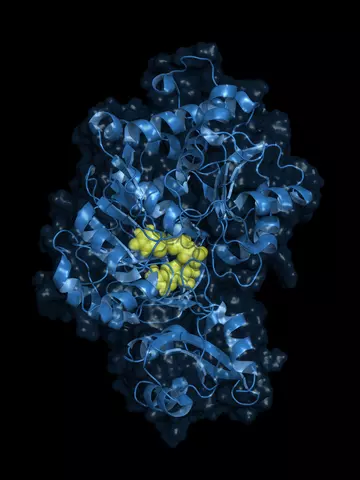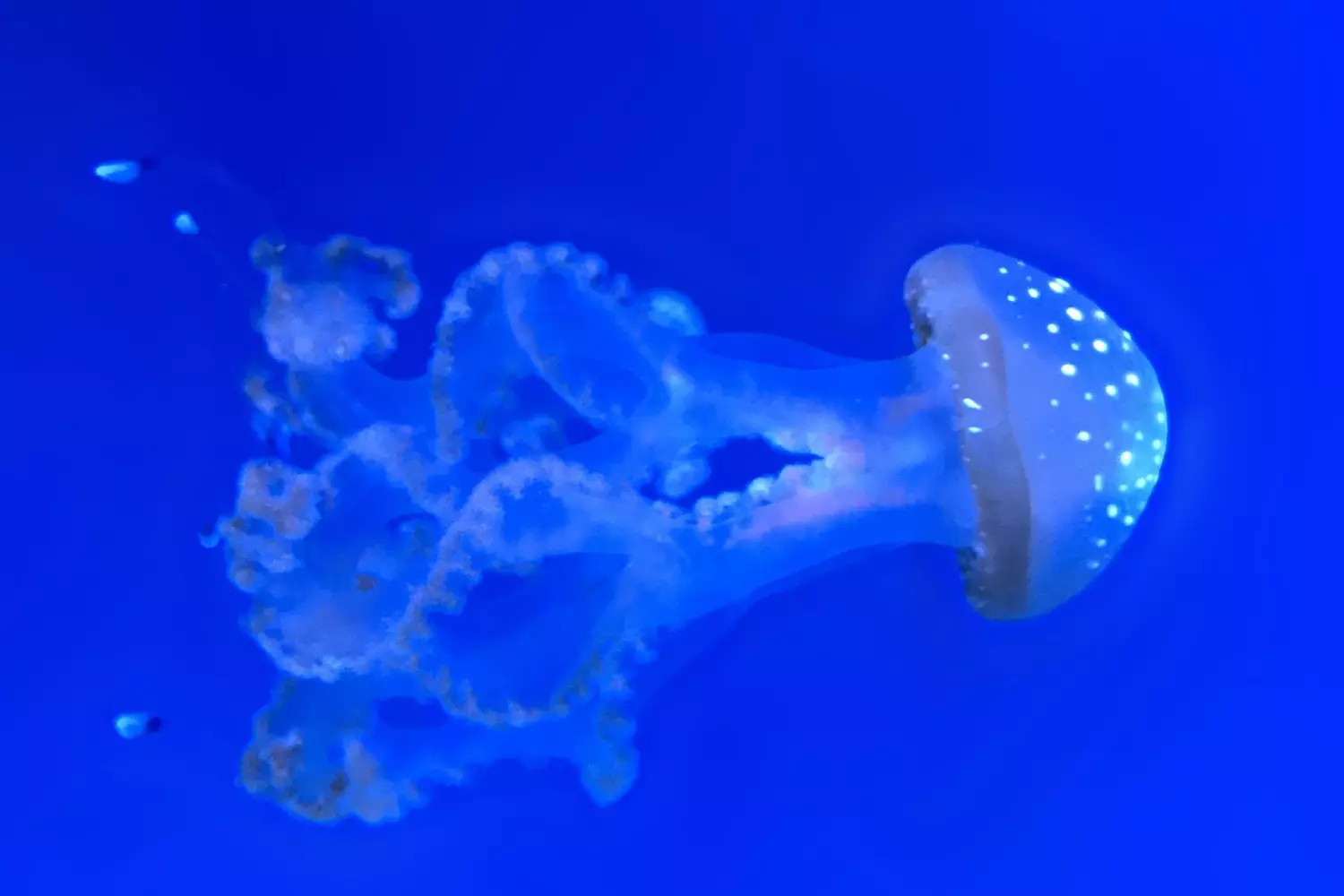[Originally posted as Origin of Bioluminescence]
Bioluminescence is woven into folklore legends. From the 8th century Japanese firefly legend known as hotaru, to Fox an Apache American Indian who spread fire over the Earth during festive dance with fireflies, the world-wide wonder of bioluminescence is interlaced throughout the expanse of nature from the microbe to vertebrates.
“Researchers,” however, “have long wondered how bioluminescence came to be,” wonders science writer Steph Yin in the Quanta Magazine article entitled “In the Deep, Clues to How Life Makes Light.”
To explore the science of ancient legends, evolutionary biologist Matthew Davis at St. Cloud State University in Minnesota, published the results of their study in the paper entitled “Repeated and Widespread Evolution of Bioluminescence in Marine Fishes” in the journal PLoS One (2016). Despite the inference in the title, however, evidence for the origin of bioluminescence continues to stymie scientists.
Modern Bioluminescence Science

Modern bioluminescence science began with Irishman Robert Boyle’s (1627–1691) discovery that air is required to produce luminescence. As a founding member of the Royal Society, Boyle (pictured) is best known for discovering the pressure-volume gas law known as Boyle’s Law.
After more than a century, French pharmacologist, Raphael Dubois (1849-1929), discovered the two key components of the bioluminescent reaction – a finding that invalidated the once long standing theory that bioluminescence came from phosphorus and coined the new chemical terms; luciferins and luciferases.
Luciferins are now known to be a class of small light-emitting protein molecules. When luciferin reacts with oxygen — a process facilitated by the enzyme luciferase — it forms a high-energy oxidized compound emitting light when luciferin returns to its low-energy state. Luciferin requires luciferase to produce light – teamwork pair in-action.
Bioluminescence is found globally across a broad range of the major groups of organisms from algae, bacteria and protists to flies, squids and fishes. The distribution of bioluminescence across the major biological groups has no geographical constraint. While the actual number of bioluminescence species is unknown, in the Fungi Kingdom alone there are at least 75 known bioluminescent species.
Luciferin-Luciferase Origins

In the search for the origins of bioluminescence, however, questions centering on the essential tenets of evolution theory begin to emerge. While the type of the luciferin protein molecule is specific for each species, the luciferase enzymes are not species specific. Importantly, the types of luciferase molecules (left) far exceeding the types of luciferin molecules – the beginning of the sequence of issues for the theory of evolution.
The problem centers on retracing Charles Darwin’s “slight, successive” steps of evolution of these unmatched luciferin-luciferase pairs back to their origins. As Yin opines, this probably never happened.
“Curiously, there are far fewer luciferins than luciferases. While species tend to have unique luciferases, many share the same luciferin… [therefore] it would be a mistake to assume that all coelenterazine [luciferin]-containing organisms had evolved from a single luminous ancestor.”
“Presumably, the first luciferin-luciferase pair would have survived and multiplied,” explained Yin, but there is no evidence that ever happened. With the exceedingly low probability of predicting on what the first single luminous pair would have been, the theory of evolution faces an uncanny dilemma.
Converging Back
The theory of evolution is built on the foundation of common ancestry. At the core of the theory, Darwin’s predicts a common ancestor for every living thing. As explained in the Origin of Species,
“By the theory of natural selection all living species have been connected… always converging [back] to the common ancestor of each great class.”
The University of California, Berkley, Evolution 101 website, underscores the importance of Darwin’s theory –
“Biological evolution, simply put, is descent with modification…. the descent of different species from a common ancestor over many generations.”
As a work-around for the missing luciferin-luciferase common ancestor at the molecular level, evolutionary scientists have been looking for a luciferin-luciferase pair common ancestor at the organism level.
Red Tides

Ocean red tides are caused by microorganism blooms known as algae. Of the wide range of algae types, dinoflagellates are one of the largest groups of single cell (eukaryotes) in the ocean. Dinoflagellates are the most common type of algae associated with the bioluminescent red-tide phenomena.
Dinoflagellates were first described by English naturalist Henry Baker (1698-1774). In December 1833, as the HMS Beagle traveled south from Patagonia, Darwin describes a glowing sight –
“While sailing in these latitudes on one very dark night, the sea presented a wonderful and most beautiful spectacle…. The vessel drove before her bows two billows of liquid phosphorous, and in her wake she was followed by a milky train.”
Darwin thought he had observed “a disturbed electrical condition of the atmosphere.” As Daniel Pauley attempts to limit the damage in Darwin’s Fishes: An Encyclopedia of Ichthyology, Ecology, and Evolution (2004), Darwin “was lucky with most of his guesses [sic], but not here.” German zoologist Otto Bütschli (1845-1920) eventually classified the algae in the phylum of Dinoflagellida.
Since over 1,500 species of marine dinoflagellates are known to exist, dinoflagellates should at least provide enough of evolution’s transitional links to construct Darwin’s tree of life at the organism level. However, as WIKEPEDIA explains,
“Dinoflagellates have a known ability to transform from noncyst to cyst-forming strategies, which makes recreating their evolutionary history extremely difficult.”
British geneticist Jan Janouškovec of the Department of Genetics, Evolution and Environment, University College London in his recent paper “Major Transitions in Dinoflagellate Evolution Unveiled by Phylotranscriptomics” published in the Proceedings of the National Academy of Sciences (2017) tries to skirt evolution’s little secret –
“They remain poorly understood in part because of their large, complex genomes, unique molecular biology, and unresolved in-group relationships.”
Evolution’s “unresolved” status undermines Darwin’s foundational prediction – common ancestry.
Dinoflagellates trouble evolution in other ways, too. They have large and complex genomes – a single dinoflagellate may have 12 to 400 chromosomes. By comparison, humans have only 23 pairs, totaling 46. No scientific explanation explains why these tiny microorganisms have more than 10 times the number of chromosomes than the infinitely more complex.
Janouškovec had lead an international team of fifteen scientists from the UK, Ireland, Canada, and the USA for the task. However, the team failed Darwin‘s test to converge back to the first dinoflagellate –
“One of these may be the evolutionary source of dinoflagellate bioluminescence.”
The scientific evidence supports the null hypothesis – there is no relationship between the scientific evidence and a natural evolutionary explanation for the origin of bioluminescence
“One of the most useful properties of scientific theories,” the US National Academy of Science notes, “is that they can be used to make predictions about natural events or phenomena that have not yet been observed.”
Eugene Koonin
In an interview published in The Huffington Post, science journalist Suzan Mazur asked Eugene Koonin, head of the Evolutionary Genomics Group at the National Center for Biotechnology Information at the National Institute of Health, in reference to the inconclusive evolution referendum at the Royal Society meeting in November –
“Why is it so difficult to pull together the most compelling ideas in evolutionary biology and come up with an approximate understanding of how it all works?”
“First of all,” Koonin quipped, “I think the public may not have much to lose in terms of confidence in the scientific establishment in this case because the public is already extremely skeptical about the value and the scientific nature of evolutionary biology. It’s not quite that way about science in general but I think largely so when it comes to the study of evolution.” So far, science and evolution are still not kissing cousins.
Since scientific evidence for Darwin’s common ancestor is still unknown, evidence gained in the search for the origin of bioluminescence only pushes the theory of evolution closer to the edge of extinction.
Genesis
Despite a flood of challenges since the publication of The Origin of Species in 1859 by Charles Darwin followed by more than 150 years of unprecedented efforts in the history of mankind to prove otherwise, the scientific evidence continues to be compatible with the Genesis record written by Moses.
Robert Boyle (1791-1867), the founder of modern bioluminescence and chemistry, gives a scientist’s perspective –
“In the Bible the ignorant may learn all requisite knowledge, and the most knowing may learn to discern their ignorance.”
Evolution, once a theory in crisis, is now in crisis without even a cohesive unifying theory.
Biological evolution exists only as a philosophy, not a science.







